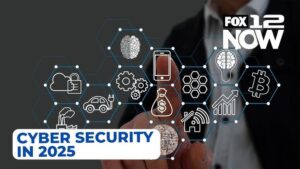Deepfake scams Are Exploding in 2025

INTRODUCTION
2015 marks a new historical chapter for digital deception through Deepfake scams Are Exploding that making viewing and hearing someone no longer constitute proof. The initial AI novelty has developed into a major criminal issue that employs high-quality, deceiving material such as cloned voices, combined with several types of fake videos to scam victims in completely new ways. Virtual kidnapping scams coupled with boardroom pranks that extract corporate funds have evolved into complex scams that continue to grow in frequency throughout the year. Studies show that deepfake-related fraudulent activities tripled throughout 2023, so that both grandparents and Fortune 500 organizations fell victim to cybercriminals’ attacks. The most unsettling part? Current technological advancements make skeptics fall victim to the scams. Understanding deepfake scams and implementing basic protective measures, along with knowing their sign,s enables you to resist becoming a victim in the current deepfake epidemic. This discussion will focus on understanding the different operations of scams as well as their effectiveness and teaching the essential skills needed for detecting scams before major damage occurs.
What Are Deepfake Scams?

Artificial intelligence generates hyper-realistic fake videos as well as audio clips and images through deepfake scams, which cybercriminals use to trick people into believing false information. AI tools used in deepfakes surpass traditional phony emails or obvious profile fakes by using state-of-the-art AI algorithms to fake speech and simulate natural expression changes to produce authentic-looking false content. Scam techniques in 2025 have evolved to such great heights that hackers succeed in faking the voice of senior executives to approve wire transfers and fraud schemes while duplicating family distress videos for extortion attempts and producing fraudulent celebrity endorsements for scams. The development of open-source AI models along with cheap deepfake services gave unsophisticated fraudsters the ability to execute realistic deception attacks. The scare factor behind deepfake scams stems from their ability to trick people psychologically, since we trust seemingly real content when we encounter it, because our minds process such perceptions as genuine. Scammers actively exploit this human tendency to dupe victims successfully. Deepfake scams function as one of the most critical digital dangers that threaten our present society through financial deception, as well as identity theft and political control attempts.
The Most Common Deepfake Scams in 2025
1. The “Virtual Kidnapping” Scam
- How it works: Scammers use AI to clone a loved one’s voice, then call pretending to be them in distress (e.g., “I’ve been kidnapped, send money now!”).
- Real-life case: In 2024, a mother in Texas sent $50,000 after receiving a call from her “daughter” sobbing and begging for help, only to later discover it was a deepfake.
Red flags:
- Urgent demands for money (often in cryptocurrency or wire transfers)
- The caller insists on no background noise (to prevent detection)
- Unusual payment instructions
2. Fake CEO Fraud (Business Email Compromise + Deepfakes)
- How it works: Criminals create fake video calls or voice messages impersonating a company executive, instructing employees to transfer large sums.
- Real-life case: A Hong Kong finance worker transferred $25 million after a deepfake CFO ordered the payment in a video conference.
Red flags:
- Last-minute, high-pressure requests
- Slight voice or facial distortions (e.g., unnatural blinking)
- Unusual transaction requests (e.g., “This is confidential—don’t tell anyone.”)
3. Romance Scams with AI-Generated Lovers
- How it works: Scammers create entirely fake online personas using AI-generated photos and videos, tricking victims into sending money.
- Real-life case: A man lost over $200,000 to a woman he met online, later discovering “she” was a deepfake persona.
Red flags:
- Refusal to video call (or only pre-recorded clips)
- Rapid declarations of love followed by financial requests
- Excuses for not meeting in person
4. Fake News & Market Manipulation
- How it works: Deepfake videos of politicians or CEOs go viral, causing stock crashes or surges.
- Real-life case: A fake video of Elon Musk “announcing” Tesla’s bankruptcy caused a 7% stock drop before being debunked.
Red flags:
- Sudden, unverified viral claims
- Slightly off lip-syncing or voice tone
- Published on suspicious websites (not official channels)
How to Protect Yourself in 2025

The defense against Deepfake scams Are Exploding on both modern technical knowledge alongside traditional doubtfulness. Begin by evaluating unexpected phone calls and messages because requests for money or confidential material might represent potential scams, regardless of supposedly familiar senders. Identity verification needs an additional method, either through calling a recognized phone number or applying emergency safety codes with family members. Every account that requires security must have two-factor authentication (2FA) set up to stop scammers from stealing data, which allows them to create realistic deepfakes. The continuous evolution of cybercriminal AI scams requires you to stay updated so you maintain your first line of defense against these attacks. Assess suspicious media with AI detection tools from Microsoft through their Video Authenticator or Intel through their FakeCatcher to identify the hidden limitations. Businesses need to establish rigorous financial transaction verification procedures that mandate several authorizations for wire transfer operations and critical system modifications. Pay attention to your gut feelings about requests since unusual ones should trigger an investigation before taking any action. The rise of AI deception requires individuals to maintain constant vigilance through verification processes for their survival.
The Pros and Cons
Pros
- No Tech Dependency – Unlike AI detectors that require software updates or subscriptions, manual checks rely on human observation, making them accessible to anyone.
- Cost-Free – No need for expensive deepfake detection software- just critical thinking and awareness.
- Harder for Scammers to Adapt – AI detectors work by recognizing patterns in synthetic media, which fraudsters continuously improve. Human intuition, however, is harder to “trick” with algorithm tweaks.
- Useful for Spotting Obvious Fakes – Poor-quality deepfakes (unnatural shadows, distorted fingers, robotic voices) can often be caught with a careful eye.
Cons
- High-Risk of Human Error – Even experts can miss subtle AI-generated flaws, especially with ultra-realistic deepfakes.
- Time-Consuming & Inefficient – Manually scrutinizing every video, call, or image isn’t practical for businesses or individuals facing frequent scams.
- Subject to Bias – People are more likely to believe deepfakes of trusted figures (CEOs, family members) due to emotional manipulation.
- Useless Against Advanced Fakes – Next-gen deepfakes in 2025 have nearly flawless lip-syncing, blinking, and voice modulation, making manual detection nearly impossible.
Conclusion
Deepfake scams Are Exploding, no longer a distant threat- they’re here, evolving rapidly, and exploiting our trust in ways that feel alarmingly real. While traditional, non-AI detection methods still have value, especially for spotting low-effort fakes, they simply can’t keep up with the sophistication of today’s AI-generated fraud. The best defense combines human intuition with technological safeguards: staying skeptical of unexpected requests, verifying identities through trusted channels, and using AI detection tools when in doubt. As deepfake technology advances, so must our awareness and proactive measures. The key takeaway? In 2025, blind trust is a vulnerability. By educating ourselves, adopting verification habits, and leveraging both old-fashioned caution and modern tools, we can outsmart scammers and protect what matters most- our money, privacy, and peace of mind. The fight against deepfakes isn’t just about technology; it’s about staying alert, informed, and one step ahead.










